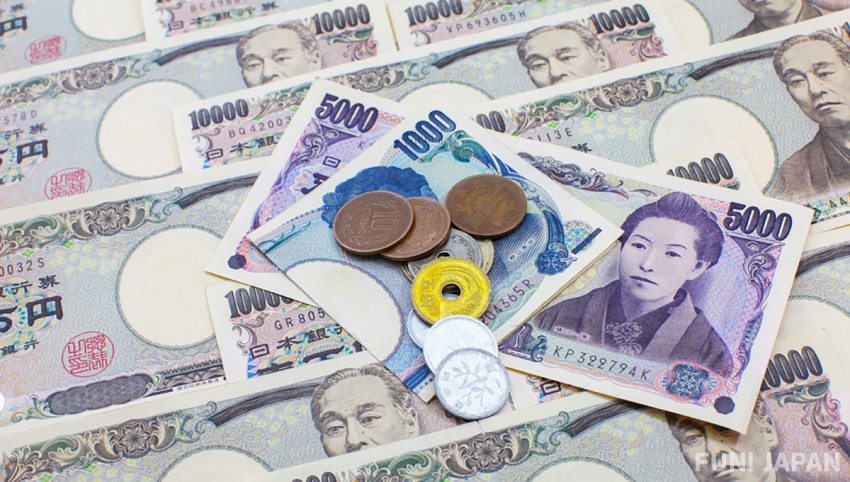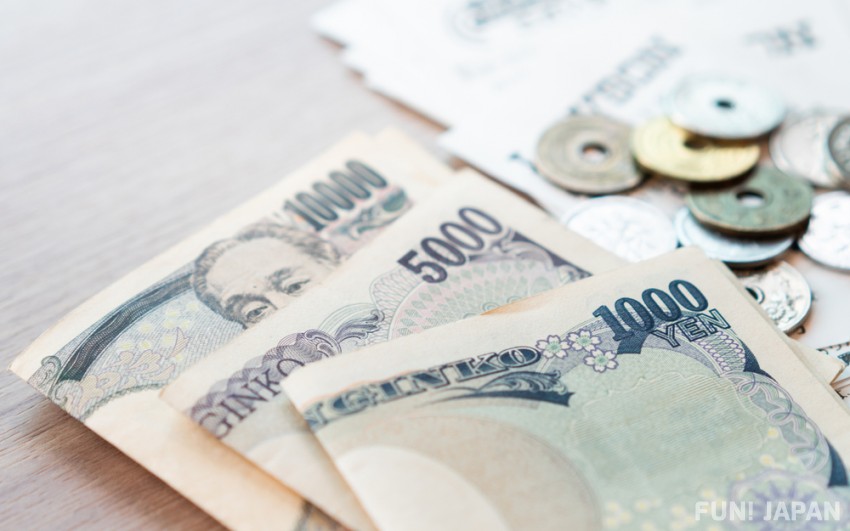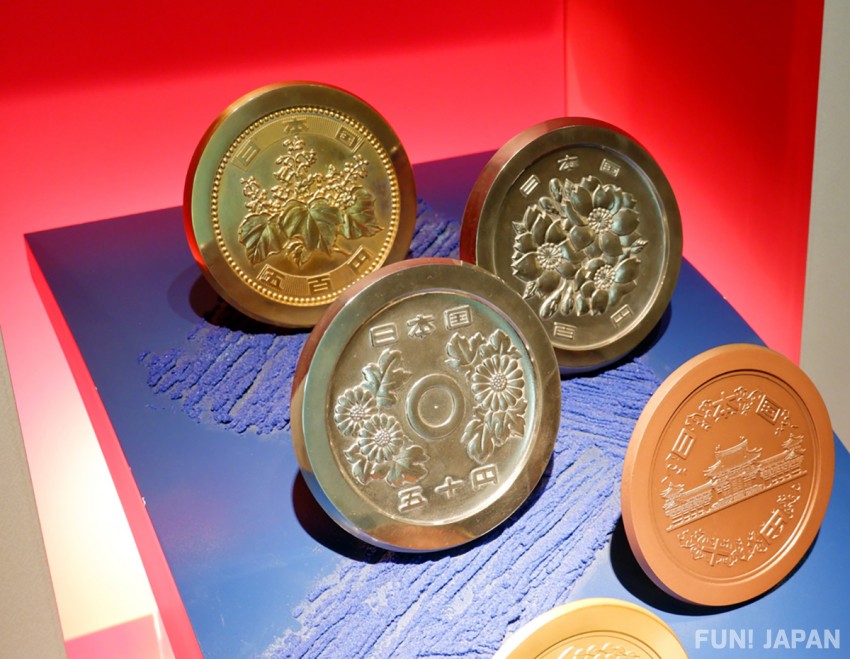Today, we are going to talk about money! Let me guide you guys and help you understand the Japanese Yen more!
Japanese Money Exchange Rate Sheet

Here we have put together a simple exchange rate sheet with data from various countries. Please use it freely.
Japanese Yen to US Dollar Exchange Rate
- 10,000 yen = USD 92
- 5,000 yen=USD 46
- 3,000 yen=USD 27.7
- 1,000 yen=USD 9.2
- 500 yen=USD 4.6
- 100 yen=USD 1(As of Oct 2019)
Japanese Yen to Malaysian ringgit Exchange Rate
- 10,000 yen=386.3 ringgit
- 5,000 yen=193.2 ringgit
- 3,000 yen=115.9 ringgit
- 1,000 yen=38.6 ringgit
- 500 yen=19.3 ringgit
- 100 yen=3.9 ringgit(As of Oct 2019)
Japanese Yen to Thailand Baht Exchange Rate
- 10,000 yen=2,776 Baht
- 5,000 yen=1,388 Baht
- 3,000 yen=833 Baht
- 1,000 yen=278 Baht
- 500 yen=139 Baht
- 100 yen=28 Baht(As of Oct 2019)
Japanese Yen to Taiwanese Dollar Exchange Rate
- 10,000 yen=NTD 2,825
- 5,000 yen=NTD 1,405.5
- 3,000 yen=NTD 843.3
- 1,000 yen=NTD 281.1
- 500 yen= NTD 140.6
- 100 yen=NTD (As of Oct 2019)
Japanese Yen to Indian Rupee Exchange Rate
- 10,000 yen=6,509 rupees
- 5,000 yen=3,255 rupees
- 3,000 yen=1,953 rupees
- 1,000 yen=656 rupees
- 500 yen=326 rupees
- 100 yen=65.1 rupees(As of Oct 2019)
Comparison of Japanese Notes and Coins

Using Japanese traditional units, such as 寸 (Sun), 分 (Bu), 尺 (Shaku) and so many others! For example, a 1,000 Yen banknote is about 2寸5分 (length) x 5寸 (width).Confusing right? Okay, I am just going to use the international units.
Japanese Notes
Let’s start with the banknotes, shall we?
1,000 yen: 76 mm x 150 mm
- Front Side: Noguchi Hideyo, a Japanese bacteriologist who in 1911 discovered the agent of syphilis as the cause of progressive paralytic disease
- Back Side: Mt.Fuji, Lake Motosu and Sakura
2,000 yen: 76 mm x 154 mm
- Front Side: Shurei-mon
- Back Side: Murasaki Shikibu
5,000 yen: 76 mm x 156 mm
- Front Side: Higuchi Ichiyou, an important writer in Meiji Period
- Back Side: Kakitsubata-zu, a work by Ogata Kourin
10,000 yen: 76 mm x 160 mm
- Front Side: Fukuzawa Yukichi , a Japanese author, writer, teacher, translator, entrepreneur and journalist who founded Keio University, the newspaper Jiji-Shinpō and the Institute for Study of Infectious Diseases
- Back Side: Statue of Phoenix from Byoudouin Temple, Kyoto (see this article for more about Byoudouin Temple
Japanese Coins
Let’s proceed with the coins:
1 yen
- Material: aluminium
- Diameter: 20 mm
- Weight: 1g
- Thickness: 1.5 mm
- FYI (for your info):
- Five 1 yen coins lined up measure 10 cm, and fifty of them measure 1m.
- 50 cm = 25 coins of 1 yen
- 1kg = 1,000 coins of 1 yen
5 yen
- Material: copper 60-70%, zinc 40-30%
- Diameter: 22 mm, aperture: 5 mm
- Weight: 3.75 g
- Thickness: 1.5 mm
- FYI :
- The coin has a hole due to the need to conserve resources caused by abrupt post-war inflation.
- 1貫(about 3.75 kg) equals to 1000 coins of 5-yen.
10 yen
- Material: copper 95%, zinc 3-4%, tin 2-1%
- Diameter: 23.5 mm
- Weight: 4.5 g
- Thickness: 1.5 mm
- FYI : 10 yen coins issued in the period from 1951 to 1958 have 132 notches (the zig zag surface (side) of the coins)
50 yen
- Material: copper 75%, nickel 25%
- Diameter: 21 mm, aperture: 4 mm
- Weight: 4 g
- Thickness: 1.7 mm
- FYI : it has 120 notches
100 yen
- Material: copper 75%, nickel 25%
- Diameter: 22.6 mm
- Weight: 4.8 g
- Thickness: 1.7 mm
- FYI : it has 103 notches
500 yen
- Material: copper 72%, nickel 20%, zinc 8%
- Diameter: 26.5 mm
- Weight: 7 g
- thickness: 2 mm
Institution where you can Study Japanese Money

In Japan there are various spots where you can learn about Japanese money completely free of charge such as the Currency Museum Bank of Japan, or the Mint Museum as well as the Banknote & Postage Stamp Museum.
For example at the Currency Museum Bank of Japan that located in Nihonbashi, Tokyo, you can see some of the first ever coins that were circulated in the country as well as other bits of history and documents allowing you to learn more. The coins Wado Kaichin (和同開珎) you can see here are the oldest in the country. Not only the coins themselves, but you can also see what people might have purchased using said money in those times. allowing for a further understanding of the Japanese culture. The coins themselves are preserved well and under good lighting making them easily visible, the establishment also has an English audio presentation prepared meaning foreigners can enjoy the display also!
Also you have the Japan Mint close to the Osaka Tenmangū which has the Mint Museum inside. It is where you can see old Japanese coins as well as ancient Chinese coins among much more including coins from all around the world. If it pleases you, you can also arrange for a guide to take you around the museum and explain everything in depth giving a fuller experience. Although the guide is only available in Japanese, there are information videos prepared in English, Chinese, and Korean which are shown above the exhibitions.
That's not all, close to Tokyo's Ouji Station there is a Banknote & Postage Stamp Museum where you can see, as the name suggests, Japanese money, stamps and things such as passports from the different eras of Japan. Within the institution there are also activities such as how to check if a note is forged so please go ahead and give it a try!

Comments